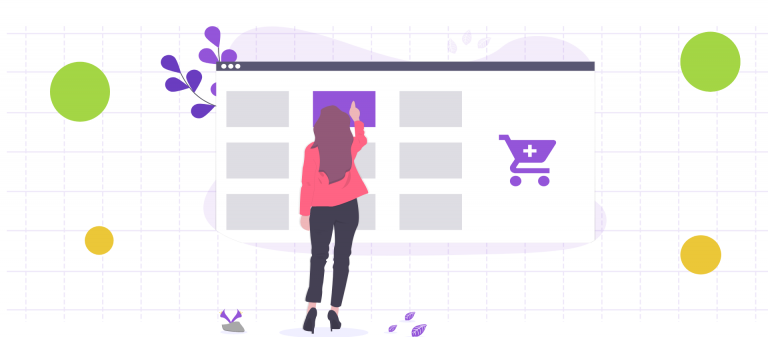15 Ways to Grow Your Nonprofit Email List

In the age of modern fundraising, email is on top of the food chain. You can put effort into social media, telemarketing, and street teams and expect to see modest results, but there is no channel more powerful and cost-effective than email marketing.
Email from nonprofit organizations enjoys a relatively high open rate of 25%, a statistic that seems to be ever-increasing while most other industries see declines. People trust email; everyone is used to it since it has been around for decades. While TikTok may only appeal to Gen Z, everybody and their grandma has an email address.
Plus you can reach an audience wherever they happen to be, whether at the office, at home, or on the train staring at their smartphones hoping for something to show up in their inboxes to pass the time. Your nonprofit email can be that something.
The only trick is building a big enough list of contacts to make your nonprofit emails worth the time and effort of segmenting, customizing, composing, and sending. The bigger the list, the more chance you’ll have of capturing actual donors and long-term supporters. Plus, every measurement you take from a large email contact list will be more statistically significant, allowing you to reliably learn more about the effectiveness of your communications. Nonprofit email list building is essential to the success of your email marketing strategy.
Fortunately, if your contact list is small, there are plenty of straightforward things you can do to make it grow. We’ve outlined our favorite 15 below.
1. Add a CTA to Subscribe on Your Donation Page
People in the process of filling out your donation form are already primed to become supporters of your organization. They’ve heard your message and decided that your mission is important enough to support you financially. Asking them to subscribe to your newsletter or mailing list is a relatively small request compared to their donation, so chances are, they’ll go for it.
Keela donation forms make it easy to add a subscribe option to your donation page to capture emails. Then, everything is synced neatly in that contact’s profile; donations, communications preferences, and more.
Pro Tip: Keep the option subtle to avoid distracting them from completing the donation, but visible and simple enough to make it obvious and easy.
Here’s a great example: The Music Heals donation page.

2. Add a Subscription Button to Your Homepage
Potential supporters who have heard about your organization will often visit your website before doing anything else. When they get there, give them the option to subscribe using a subscription button to immediately capture their contact information for use in future email campaigns. Be sure to let them know the value of subscribing, e.g. updates, special offers, volunteer opportunities, chances to get involved, etc.
It’s also a good idea to have an easily accessible privacy policy page on your website to reassure potential subscribers that their personal information will not be shared with other groups.
3. Write and Publish Articles
Many potential supporters will arrive at your organization via organic search, which is to say, googling. And a great way to capture that search traffic is with SEO-optimized blog posts, which should already be part of your content strategy.
If a user finds a blog post and discovers it is well-written, interesting, and relevant to them, there is a good chance that they will want to read more. So be sure to offer them the opportunity to subscribe to your newsletter, campaign updates, new blog posts, etc. to make it easier to keep up with your organization’s activities.
4. Create and Share Gated Content
Similar to blog posts, gated content, sometimes called premium content, adds a layer to your list-building strategy and is an integral component of collecting email addresses. Gated content is often a white paper, ebook, template, webinar, spreadsheet, or anything else that is a little more practically useful than a simple blog post.
Users are offered the option to view or download your premium content for free in exchange for their email addresses. It’s a simple, non-monetary transaction that gives something to both parties. Just be sure to communicate the value of your gated content upfront in order to convince users to share their information with you.
5. Use Pop-ups
Once the bane of surfers everywhere, modern web designers have pulled pop-ups back from the edge and amazingly made them both acceptable and useful. For nonprofit websites, pop-ups are a great way to remind visitors to subscribe to your mailing list, regardless of which page they land on; they’re also a great way to avoid having visitors scroll right past an email signup button.
When adding a pop-up to your website, follow best practices to avoid annoying potential supporters, and be sure to choose a pop-up design that works to help grow nonprofit email list volume for your organization. For example, a lead magnet pop-up is a perfect design to promote your gated content from tip number four.
6. Promote Your Newsletter on Social Media
Even though social media may not be quite as effective as email, that doesn't mean you shouldn’t share your newsletter and subscription links on your social channels. After all, social media gives you the opportunity to reach potentially millions, or even billions of people, so if even a small percentage subscribes, that could be a big boost to your contact list. Add a subscription link in your account bios, as well as on posts and in stories to encourage interested folks to subscribe for updates and more information from your mailing lists.
7. Leverage Peer-to-Peer Fundraising
Peer-to-peer (P2P) fundraising campaigns are great for a lot of reasons. Top of the list is reached: with dedicated supporters fundraising and sharing your online fundraising campaign on your behalf with their personal contacts, P2P fundraising helps your message get to people who are outside your usual network. And you can piggyback your list-building goals on any P2P campaign by ensuring that your campaign information and donation page provide ample opportunities to sign up for your nonprofit email newsletter, even if users choose not to donate right away.
8. Host Fundraising Events
Events, whether online or in-person, are great ways to raise funds and awareness for your cause. But they’re also a great opportunity to gather email addresses to add to your mailing list.
If you’re selling tickets through your website, don’t hesitate to add a subscribe button to the purchase form. Or put a sign-in sheet at the door to your live event asking for contact information. And always remember to communicate to your supporters the value of sharing their email addresses.
9. Guest Blog for Other Websites
If you have existing partnerships or have identified causally aligned businesses or other nonprofit organizations, reach out to them with an offer to write guest content for their blogs and include a link to your newsletter or subscription form. Leveraging an AI writing tool for your blog can streamline the process of creating compelling guest content, allowing you to seamlessly reach out to existing partners or causally aligned businesses, while strategically integrating links to your newsletter or subscription form. In this mutually beneficial relationship, your partner organization gets free, engaging content that is socially relevant, and you get access to their audience, opening up their user base to your nonprofit email communications.
10. Build Corporate Partnerships
If you’re working on step nine on this list and realize that you don’t have any corporate partnerships, maybe it’s time to start some. Reach out to local businesses for help with your next campaign, explaining the benefits to their operation. Once they are on board, you’ll have access to their community and can potentially add them to your nonprofit email list.
One step further would be to pursue corporate giving with partner businesses, wherein you help their organization set up an employee giving opportunities like donation matching. When employees give to your cause, you’ll receive their donations and their contact information.
11. Send Direct Mail
Contrary to what you might have heard, direct mail is not dead. So if you’re building a direct mail campaign asking for donations or spreading awareness, don’t forget to include a field on the response form for your recipients’ email addresses. If you aren’t asking for replies from your audience, you could also add a (shortened) link to your subscribe form or even a QR code that people can scan to subscribe to your nonprofit email newsletter.
12. Run Paid Ads
Paid advertisements are an awesome way to target and reach out to new audiences—if your budget allows it. Social media ads can be purchased for very reasonable prices; magazine, television, and radio ads tend to be quite a bit more expensive.
Either way, you can run ads that ask people to give through your donation page and capture their addresses that way (see step one on this list), or you can even run an ad campaign that specifically encourages people to subscribe to your newsletter. This is especially effective if your team is putting out engaging and useful content.
13. Encourage Sharing
Wherever you happen to be communicating with your supporters, it never hurts to ask them to share your email subscription link with their friends, family, and coworkers. It’s simple, it’s free, and can be very effective since your existing subscribers will essentially be vouching for your content.
14. Send Welcome Emails
While finding new subscribers requires a lot of work, keeping those subscribers is its own battle. One of the best ways to ensure new followers stay subscribed is a welcome email. When new supporter subscribes to your list, they’ll receive an email that explains a little more about your organization, provides them with giving or volunteer opportunities, and helps them to feel like they are part of your community, which hopefully will keep them looking forward to your next newsletter.
15. Use an Intuitive Email Marketing Tool
Everything on this list can be achieved a little (or a lot) more easily with an email marketing tool like Keela. These software platforms can help you make smart decisions about how to segment your contact lists into usable categories, when to send an email, and how to personalize your communications.
Keela can even help you design emails that are as beautiful as they are effective. And when you’re ready to launch your next email marketing campaign, Keela can also help automate the process while keeping your audience’s data secure. That’s just smart.
.svg)



